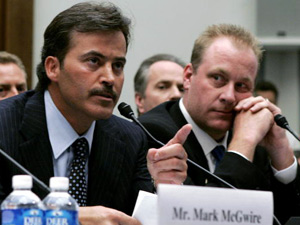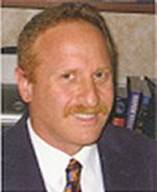That THUD you heard Saturday afternoon was the other shoe dropping for Jaret Wright.
Wright was making only his third start since returning from nearly four months on the disabled list. Yet, already the AM sports talk radio crowd is ready to crown him the #2 starter in the Yankees’ postseason rotation, which is still over a month away, as you know, and as they should know too. Nevertheless, every weekday morning, without fail, the relative merits of various Yankee starting pitchers are discussed and a new, daily decision is made regarding who should get to start for the Bronx Bombers in the postseason.
“Aaron Small is 4-0…Shawn Chacon has been their best pitcher…Randy Johnson gives up too many homers…Leiter’a a seasoned veteran…Mussina’s too inconsistent…and etc.”
Never mind that Chacon, Small and Wright have pitched well for only a handful of starts, after having largely inconsistent or unimpressive careers before that. Never mind that nobody knows whether or not the Yankees will even make the playoffs, much less have six healthy starters from which to choose, come October.
Well, if there was any question about whether Jaret Wright has “returned to form”, let the record state now: The answer is ‘yes’. Unfortunately that “form” is that of a relatively hard-throwing pitcher with control and confidence problems, not the 15-game winning workhorse the Yankees thought they paid for when they signed him to a three-year, $21 million contract in the off season.
Jaret Wright has been lucky since he came off the DL, plain and simple. I’ll show you:
8/15/2005: Wright faced the Tampa Bay Devil Rays, who, despite playing better since the All-Star break, are not a good-hitting team. They don’t have a guy with a .300 batting average or a .385 OBP in the lineup, and have only two players slugging over .500, one of them for only half the season. They do score a little better at home than on the road, but that just makes them mediocre, not good.
…In the second inning of that game, he got a pop-out from Aubrey Huff, but then hit Johnny Gomes with a pitch, who promptly stole second base. He then walked Travis Lee, who despite having an excellent first name can’t hit his way out of a paper bag. In the process, Wright threw eight straight balls (including the one that plunked Gomes), before he got Alex Gonzales to line out and induced a pop up from the inexplicably anxious Toby Hall, who had no business swinging at the first pitch he saw.
…In the fifth inning, he allowed a leadoff double to Gonzalez, who went to third on a wild pitch and scored on a single by Hall. A double play got him out of that jam, but then he hit Julio Lugo with a pitch, and lucked out when he got caught stealing. (For the record, Lugo is an excellent base stealer, but should not have been going on a 1-0 pitch, against a clearly-struggling pitcher, with his team down by two runs in the fifth inning.)
…in the seventh inning, he hit Gomes with another pitch and allowed a single before Tanyon Sturtze relieved him, after throwing only 79 pitches, and got out of that jam. So while he allowed only two earned runs in six innings and change, he also threw a wild pitch and hit four batters. Not exactly what you’d call dominance.
8/22/2005 Wright starts against Toronto, walks the bases loaded in the first inning, throwing 27 pitches in the process, but get out of it without allowing a run. Afterwards he settled down and was mostly pretty good against a team that hits pretty well on the road, allowing only four hits (no walks, one wild pitch) in his remaining six shutout innings, which were only possible because of the luck he had in the first.
8/27/2005 The luck runs out. Well, not for the Yankees, who almost miraculously overcome a four-run deficit in the ninth inning to win, but definitely for our man Jaret. Wright got into trouble immediately against the worst-hitting team in the American League. But with two on and nobody out, he got three straight outs to eliminate the threat.
…In the fifth inning, with the bases loaded and two out, he allowed a double and two singles to score three runs, then another run to score on a wild pitch, putting the Yanks down, 5-3. He had thrown 109 pitches and would not come out for the sixth inning. Even in the innings in which he did not allow a hit or walk, he went to 2-0 or 3-1 to a lot of batters, many of whom would be riding the bench or waiting in AAA if under contract with a good team. He threw a first-pitch ball to 14 of the 24 batters he faced. Even a team as bad as Kansas City would not let him get away with that.
Again, fortunately for Wright, and even more so for the Yankees, they happen to have one of the best offensive teams in baseball and they happened to be facing the worst pitching staff in the major leagues. And without their closer, Mike "Mac the Ninth" MacDougal available Saturday, the Royals' fate was left in the hands of Jeremy Affelt and Shawn Camp. Affelt did his job as a pitcher well enough, striking out Bernie Williams and inducing a double play grounder that should have ended the game as a 7-3 victory for the Royals, if he had not made a bad throw to second base. But alas, favor smiled upon the arrogant and overpaid, as the Yankees took advantage of the defensive mishap to push five runs over the plate and win the game, 8-7.
Having been at the game myself on Saturday, I can say without question that this was one of the most boring contests I had ever personally witnessed, until the ninth inning. Many of the 54,452 fans in attendance got up and left in the eighth inning, to beat the traffic, presuming that the Yanks had little or no chance to overcome such a steep obstacle as a 4-run lead by a team against whom you had gotten only four hits in eight innings.
My mom and wife and I though, stayed, and toughed it out, and were therefore rewarded with one of the more exciting and dramatic come-from-behind wins in recent Yankees history, if not all time. I would like to be able to say that we did this because we are all such die-hard fans and that we never gave up hope that our boys could pull it out and win one for the Gipper, or at least for Gary Cooper. But the reality is that I live over two hours away and that my mom and I, who actually consider ourselves baseball fans (unlike my wife, who slept through most of the first seven innings) only get to one Yankee game a year, and we weren't about to leave early from it. I'm so cheap that I was actually hoping that the ninth inning might end in a tie so we could get some free baseball, "extra innings" and thereby stretch out baseball dollars a bit further. "Let's see, $150 for nine innings averages out to about $17 per innings, so if the game goes into the tenth..."
In the end, even though the game wasn't a bargain, we certainly got more than we bargained for, and I wouldn't have traded such a comeback for a 22-2 drubbing any day.













